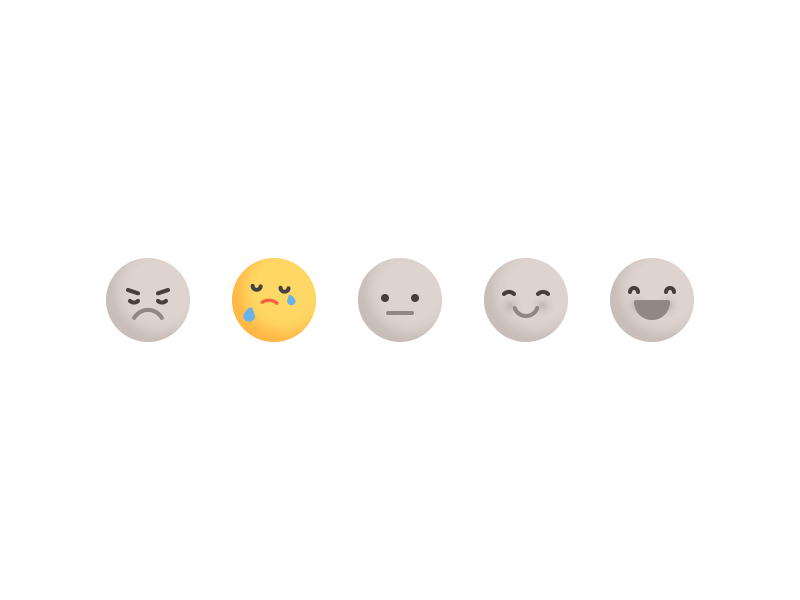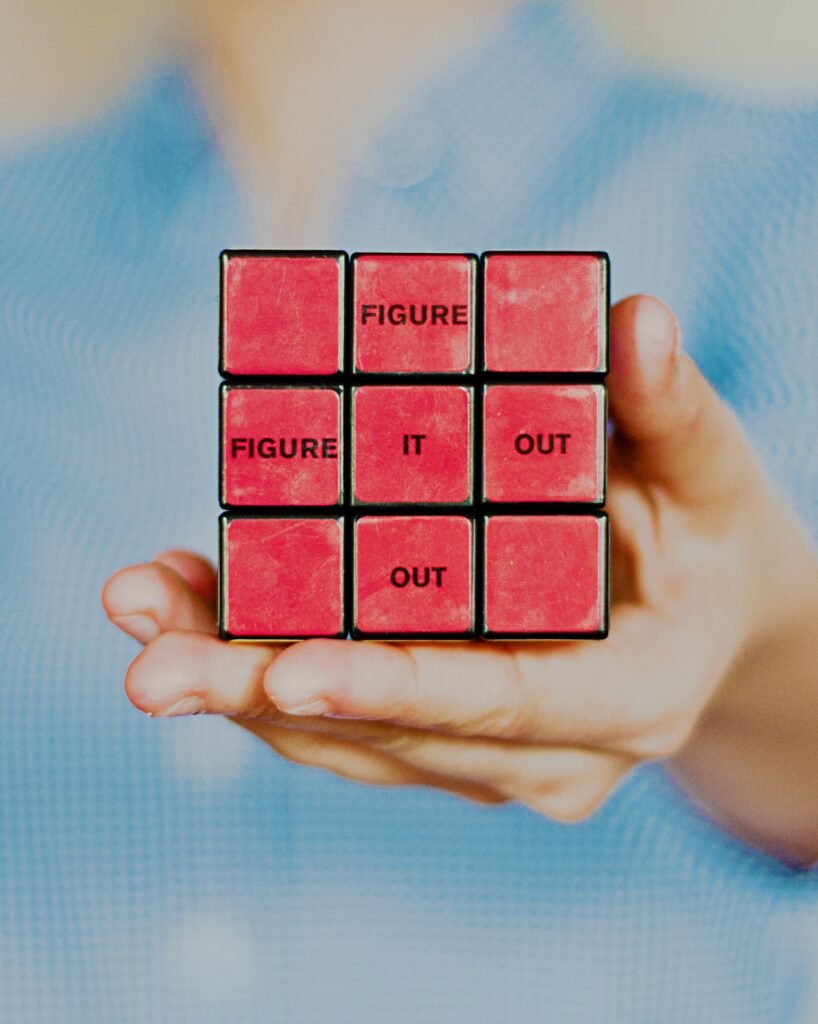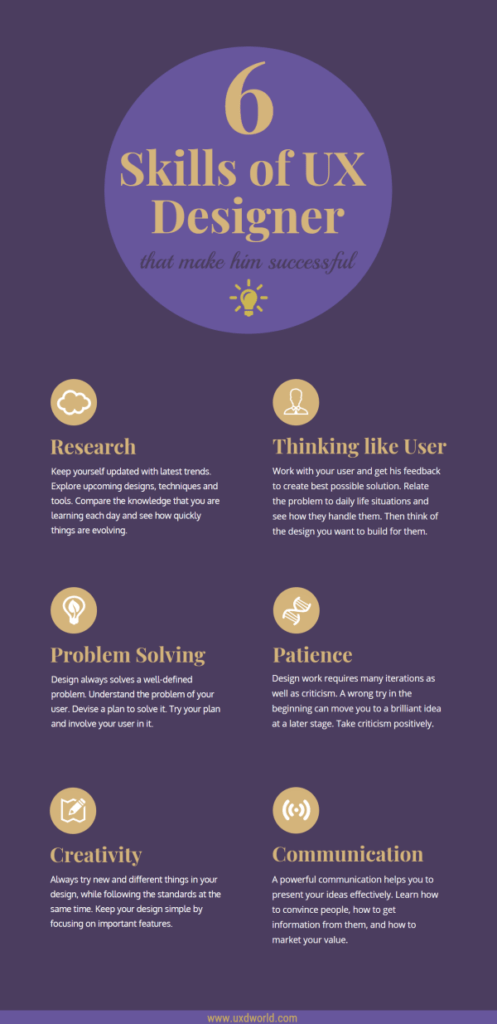Stepping into the UX career does not require a lot of experience or knowledge of the field. You can develop and improve your UX design skills and become a great UX designer if you:
- have relevant education
- are interested in design thinking
- want to study human behavior
- are a good problem solver, or
- love creativity and innovation
If you have any of the above qualities, you can start your career as a UX designer. Starting your career as a UX designer is not very difficult. You can learn the required UX design skills from your senior colleagues/mentors or become a self-taught UX designer. But, becoming an expert in the field requires practice, effort, and time.
“Success is no accident. It is hard work, perseverance, learning, studying, sacrifice, and most of all, love of what you are doing or learning to do.” — Pele
Key Takeaways
- It is important to measure your UX design skills regularly to improve them.
- Compare your previous work with your today’s work and analyze the results.
- Get feedback from people around you to evaluate your work.
- Measure the user satisfaction and improve based on the results.
Ways to Measure Your UX Design Skills
An important question that comes to mind is how you can evaluate yourself as a UX designer. How can you know that your UX skills are continuously improving?
Below are different ways to measure your UX design skillset. They will help you find and work on the improvement areas for yourself.

See the video below if you don’t want to read the content.
Evaluate your expertise
UX design requires several soft and hard skills to learn and practice. The first way to measure your skills is to evaluate these skills against your level of expertise.
1. List down the UX design skillset
Soft skills required for UX designers include :
Hard skills that a UX designer should possess are:
2. Assign levels to each skill
Assign each UX skill a level of expertise you think you are currently at.
- Level 01: Novice — You have studied the skill but haven’t practiced it.
- Level 02: Beginner — You have done around 100 hours of practical work with the skill and coordinated with others.
- Level 03: Intermediate — You have practiced this skill professionally.
- Level 04: Advanced — You have practiced the skill professionally as well and you can teach others about the skill.
- Level 05: Expert — You are a well-known person with the skill. You can make or teach courses about the skill and share your experience with others.
3. Evaluate
- Evaluate yourself for each skill as per defined levels.
- Try your best estimate of your expertise.
4. Analyze the result
- Set a target for you to achieve in the next 3–4 months. Do this exercise again after the set date and see the difference.
- If you can see improvements in different skills, you are doing well. Keep on practicing this exercise.
“Practice the philosophy of continuous improvement. Get a little bit better every single day.” — Brian Tracy

Compare you with yourself
Do not compare your work with others, but don’t be afraid to learn by looking at others’ work.
“Improvement begins with I.”– Arnold H. Glasow
- Compare your previous work with today’s work. Can you see any improvement in your work? What are these improvements? Are you more satisfied with today’s work?
- Open your previous design and try to find flaws in it. How many concepts you didn’t know about UX design yesterday that you are aware of today?
This exercise will help you know things you have learned over a certain period. Repeat this exercise every 2 months and you will see how quickly things are changing.
“The only person you should try to be better than is the person you were yesterday.”― Tony Robbins

Get feedback
Be open to getting feedback on your work. Do share your work with the world and hear what they like and dislike.
- Make a public portfolio and upload your design artifacts.
- Join public forums and share your work and concepts there.
- Get feedback from other designers. The feedback will tell you about the required improvements.
- Work on these improvements. Compare the feedback you received yesterday with the feedback you are getting today.
You will get an increase in the number of fans and followers of your work each day.
“We all need people who will give us feedback. That’s how we improve.”– Bill Gates

Analyze user satisfaction
Get to know if your user is happy with your work or not by asking these questions to yourself.
- Are you adding any value to their business?
- Is your design work helping them to move toward growth and success?
- Are you helping to solve their problems?
The happiness and satisfaction you receive from your users is a good way to evaluate your skills.
“Unless you have 100% customer satisfaction, you must improve.” — Horst Schulze

Want to Learn UX Design?
- Try Interaction Design Foundation. IxDF offers online design courses covering the entire UX design spectrum, from foundational to advanced level. As a UX Design World reader, you get 25% off your first year of membership with the IxDF.
- The UI/UX Design Specialization from Coursera brings a design-centric approach to user interface and user experience design. It offers practical, skill-based instruction centered around a visual communications perspective. By learning this Design Specialization, you can design high-impact user experiences for your customers.
Thanks for reading.
Subscribe for more related articles at UX World.
If you have any questions, contact us here: Facebook | YouTube | Twitter | Instagram | Linkedin



